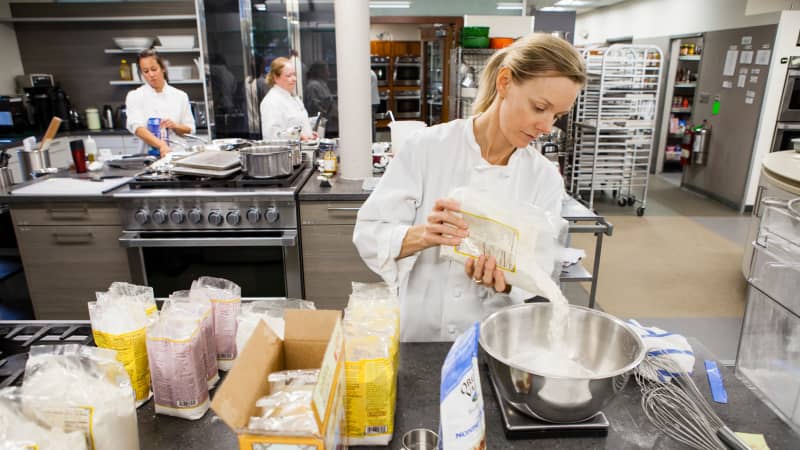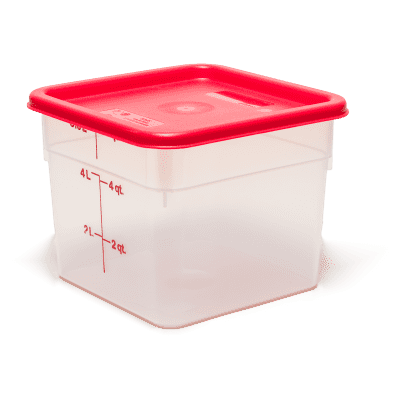Even if they share the label “all-purpose,” not all brands of all-purpose flour are the same, and which brand you buy can influence the outcome of your baked good. We proved this point by testing 9 brands of all-purpose flour in 4 different applications: biscuits, cookies, pie crusts, and muffins. While all of the results were acceptable, each brand produced a slightly different result in terms of rise and texture. If you want a recipe to come out just so, it’s good to know what you’re getting with any given brand of flour.
A Guide to All-Purpose Flour: Shopping Tips, the Best Brands, and More
Published Apr. 10, 2017.

How All-Purpose Flours Differ
All-purpose flour is made up of two main components: starch and protein. But the amount of protein in any given brand of all-purpose flour varies. That's important because the more protein a flour has, the greater its ability to form gluten, the network of proteins that gives baked goods structure.
The protein level of flour is dictated by the type of wheat it is made from. All-purpose flour is typically made from hard red winter wheat, which contains 10 to 13 percent protein, though many manufacturers mix in soft wheat, with a protein count of 8 to 10 percent, in order to meet protein specifications. You can actually feel the difference between the two with your fingers: Hard wheat flours tend to have a subtle granular feel, while soft wheat flours have a fine, starchy texture, much like cornstarch.
Bleached versus Unbleached Flour
When flour is first milled, it has a yellowish cast that some consumers find unappealing. Within a few months of milling, however, these carotenoids, or pigments naturally whiten. Because it is expensive to naturally “age” flour, some producers expedite the process chemically. In flours labeled “bleached,” benzoyl peroxide has likely been used to fade the natural yellow color of the wheat. We used bleached and unbleached flour to prepare several recipes, including béchamel sauce, oatmeal cookies, and cornbread. To read more about our taste tests of bleached versus unbleached flour, check out this article.
All-Purpose Flours by Protein Content
All-purpose flour manufacturers don’t typically list the protein count on the label, but we’ve gathered that information and used it to group the major brands into three categories: high, moderate, and low protein. Use this list to choose a flour when your recipe calls for all-purpose flour with a specific protein count.
High Protein
- King Arthur Unbleached Enriched All-Purpose Flour: 11.7% protein
- Heckers/Ceresota Unbleached Enriched Presifted All-Purpose Flour: 11.4-11.8% protein
Moderate Protein
- Gold Medal Unbleached All-Purpose Flour: 10.5% protein
- Gold Medal Bleached All-Purpose Flour: 10.5% protein
- Pillsbury Unbleached Enriched All-Purpose Flour: 10-11% protein
- Pillsbury Bleached Enriched All-Purpose Flour: 10-11% protein
- Hodgson Mill Unbleached All-Purpose Flour: 9.5-10.5% protein
- Martha White Enriched Bleached Pre-Sifted All-Purpose Flour: 9-11.25% protein
Low Protein
- White Lily Enriched Bleached Plain All-Purpose Flour: 7-8.5% protein
Two All-Purpose Flours for All Your Baking Needs
So, do you need to stock all three types of all-purpose flour in your pantry? No, but we do suggest that you keep two types on hand: moderate-protein all-purpose flour and high-protein all-purpose flour.
For a moderate-protein all-purpose flour, we particularly like and Gold Medal, which has 10.5 percent protein; for a high-protein choice, we recommend King Arthur, which has 11.7 percent protein. Both manufacturers mill to a specific protein count, instead of a range, which can make your baking results more consistent.
We recommend a moderate-protein all-purpose flour for the vast majority of baked goods, but for baked goods that require a little more gluten development, a high-protein all-purpose flour is preferable.
We almost never call for low-protein all-purpose flour. If we are making something like an ultratender cake, we turn to cake flour, which has a similarly low amount of protein.



